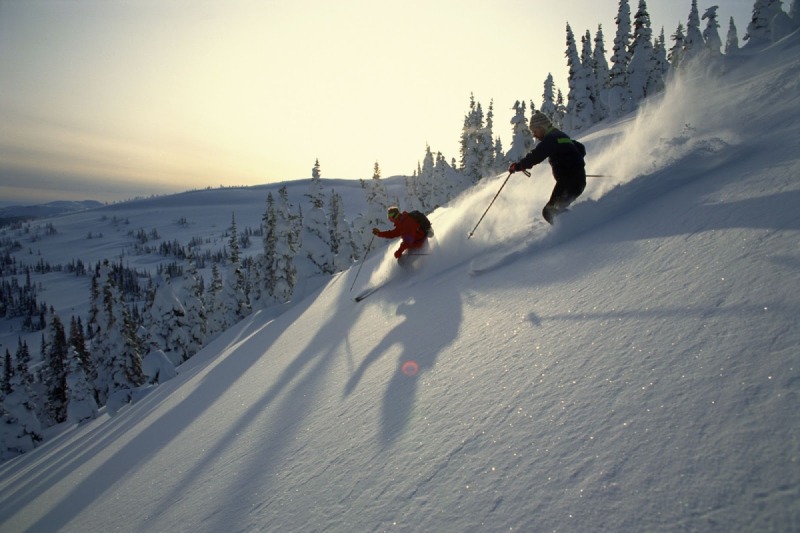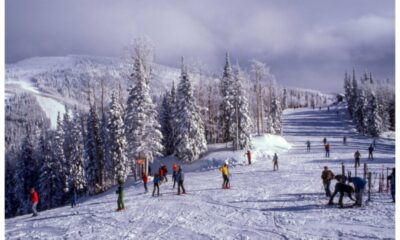Travel
Rick Torrey on Skiing as a Lifestyle and Leadership Practice

Skiing daily isn’t just about recreation—it’s a commitment that weaves into the fabric of life, shaping perspective, behavior, and mindset. This steady practice builds more than skill on the slopes; it cultivates habits that influence leadership, decision-making, and emotional resilience.
Rick Torrey knows that those who embrace this lifestyle often discover that the lessons learned in snow and silence echo into boardrooms, classrooms, and relationships. The physical exertion, mental clarity, and emotional regulation developed on the hill are not left behind with the gear—they follow the skier throughout the rest of their day.
Whether leading a team, running a company, or managing personal growth, the daily practice of skiing serves as both a mirror and a tool, reflecting inner commitments and sharpening outer performance without the need for words.
Framing Daily Skiing as a Consistent Lifestyle
Waking up each winter morning and heading to the slopes becomes more than a routine—it turns into a rhythm that shapes the day. The act of skiing every day during the season demands a steady structure that blends physical movement with mental readiness, creating a foundation that supports other areas of life.
Sliding into boots, checking the forecast, and adjusting to changing snow or light conditions becomes second nature over time. This type of consistency doesn’t just improve skill; it encourages a steady mindset. Athletes, entrepreneurs, and educators who integrate this practice often describe how it grounds their energy before a day of decision-making. It becomes something they rely on, like a compass for maintaining direction.
Building Discipline Through Routine
Committing to ski every day, regardless of weather or workload, demands a level of personal discipline that naturally transfers into other parts of life. It requires planning ahead—knowing when to carve out time, how to prepare gear, and how to prioritize rest and recovery. This kind of intentional structure reflects a mindset that values consistency over convenience. Even on days when energy is low or schedules feel tight, the commitment remains.
Many leaders talk about showing up, not just when it’s easy, but when it’s hard. Daily skiing mirrors that principle. On cold, gray mornings when motivation fades, following through reinforces a deeper kind of reliability—the kind that others quietly notice and respect. It becomes a quiet act of perseverance that sets a tone for the rest of the day.
Over time, this daily rhythm forms a personal accountability loop. There’s no applause or external reward, just the internal satisfaction of doing what you said you would do. That habit of follow-through becomes a model for leadership rooted in action, not declarations. It builds the kind of trust that doesn’t need to be spoken about—it’s simply known.
Decision-Making and Mental Presence
The mountain demands awareness. Snow conditions shift mid-run, crowds appear suddenly, and visibility can change in seconds. Each descent calls for instinctive yet thoughtful decisions, sharpening the ability to assess risk and adapt on the fly.
This kind of agility is just as essential in meetings, negotiations, or crisis response. The more one practices it, the more natural it becomes to stay calm and decisive under pressure.
Being fully present while skiing sharpens focus in other areas. The intensity of navigating a steep slope or managing speed through trees leaves no room for multitasking. That mental reset—free from distractions—can carry over into clearer thinking when it’s time to lead teams or tackle complex problems.
Wellness and Resilience Through Outdoor Practice
Being outside every day, even in freezing temperatures, has a way of strengthening both body and mind. The simple act of breathing in crisp air, moving through snow-covered landscapes, and feeling the pull of gravity on a descent helps release tension and recalibrate energy. This daily immersion in nature provides a powerful counterbalance to screen time and stress. The cold isn’t something to avoid—it becomes part of the experience that enlivens the senses.
Over time, the body adapts. Muscles grow stronger, lungs become more efficient, and sleep becomes more restful. But the deeper shift is internal—a resilience that comes from meeting the elements rather than avoiding them.
Leaders who make space for this kind of renewal often find they return to their work with more clarity, patience, and perspective. Sustained exposure to the natural world has a way of smoothing out sharp edges. It doesn’t just build endurance—it restores balance.
Reflection and Strategic Thinking in Solitude
There’s a distinct kind of thinking that only happens in motion. Gliding across quiet trails or pausing at the top of a ridge opens the mind. Without the noise of conversation or the pressure of performance, space appears for sorting out ideas, weighing decisions, or simply letting thoughts settle. The rhythm of skiing provides a kind of movement that soothes the mind while sharpening awareness.
That solitude often becomes a kind of mobile journaling. Insights come not from force but from flow. Many who lead others find their sharpest strategies emerge during these quiet moments—the ones that arrive when attention is focused but unhurried. In the absence of distraction, priorities have a way of realigning themselves. What once felt urgent may fall away, revealing what truly matters.
Modeling Leadership Through Lifestyle
Actions speak louder than policies or mission statements. When someone commits to a consistent, values-driven habit like skiing every day, it sends a message—one of discipline, balance, and self-respect. That message doesn’t need to be declared; it’s felt by those watching. It shows that leadership can be lived out as a quiet example, not just spoken from a podium.
People are more likely to follow leaders who live in alignment with what they encourage in others. A lifestyle that reflects intention and effort becomes a quiet form of influence. It doesn’t need to be perfect, only honest.
Whether it’s a teammate, a family member, or an entire organization, those in proximity are affected by what they see repeated day after day. The ripple effect of that consistency often extends farther than the individual realizes.
-

 Apps3 weeks ago
Apps3 weeks agoGoogle Maps will have AI-powered Features for the First Time in India – 10 Upcoming Updates for the App
-

 Business3 weeks ago
Business3 weeks agoGoing Beyond Expectations: Apex Service Partners and Putting People First
-

 Business4 weeks ago
Business4 weeks agoAccelerating Legacy Application Modernization with AWS Migration Services
-

 Business4 weeks ago
Business4 weeks agoBlack Banx Group — Third Quarter 2025 Results
-

 Business3 weeks ago
Business3 weeks agoKurt James Wichman Explains How Global Brands Go Local
-

 Entertainment3 weeks ago
Entertainment3 weeks agoVISHAAD, Starring Rajeshwar, Ashish Vidyarthi and Ketaki Narayan, Heads to KIFF 2025!
-

 Tech4 weeks ago
Tech4 weeks agoWhat’s New: Google Photos and Google Maps will Soon Get New Logos
-

 Real Estate3 weeks ago
Real Estate3 weeks agoStephen Monro on the Evolution of Mediation Services in Real Estate
























